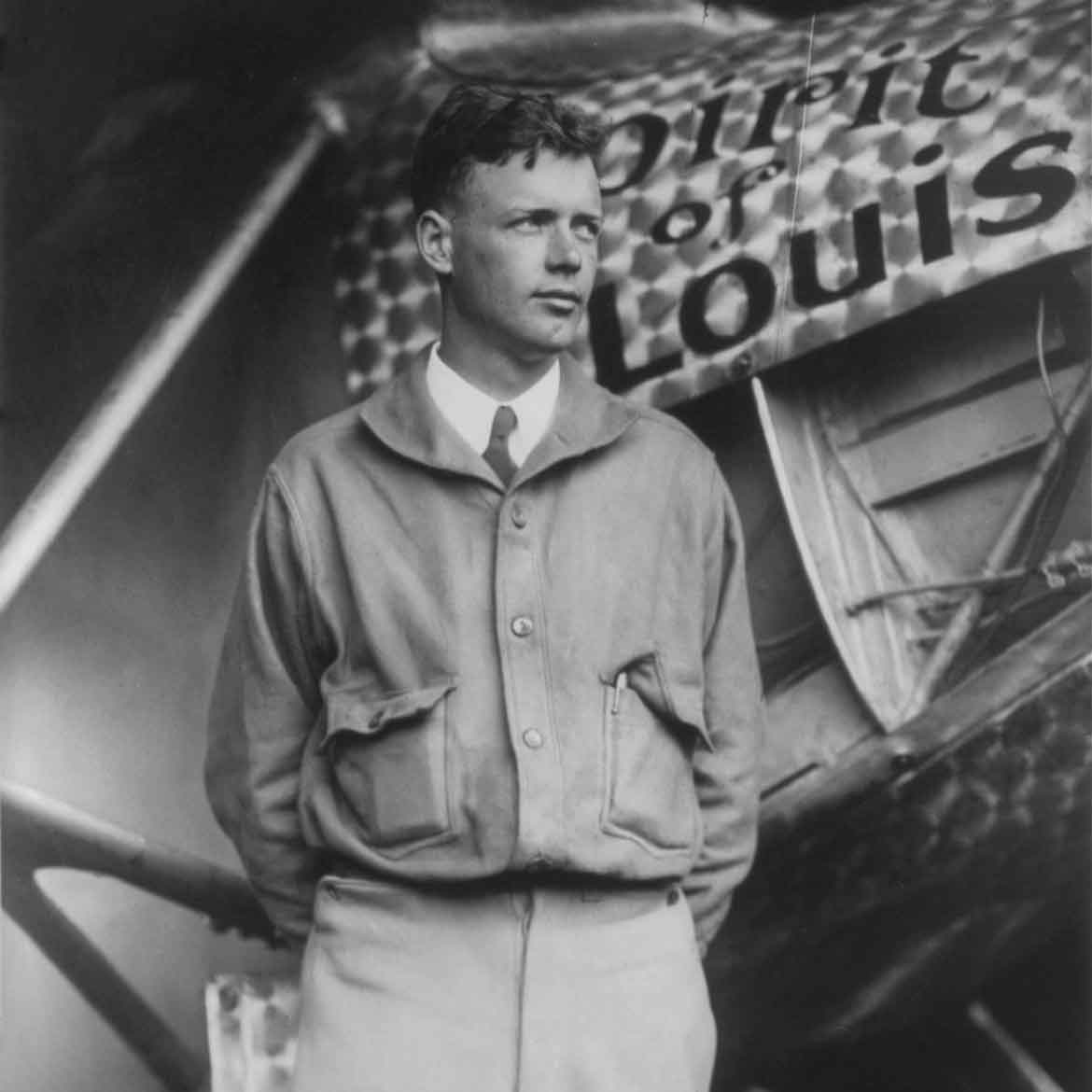Friendship Flight 1997
Commemorating The Flight of Lindbergh
70th Anniversary Itinerary
San Diego: Depart May 10,1997 4:55 p.m.
St. Louis: Depart May 12, 1997 9:13 a.m.
New York: Depart May 20, 1997 7:52 a.m.
Paris: Arrive May 21, 1997 11:00 a.m.
In early February 1927, Lindbergh wired Ryan Aircraft with the famous question, "Can you construct Whirlwind engine plane capable of flying nonstop between New York and Paris...?" Lindbergh had approached several aircraft manufacturers with no success.
However, Ryan was different. "Can build plane similar M-1 but larger wings...delivery about three months," came the response. But Lindbergh needed the aircraft sooner, and Ryan complied.
On February 23, Lindbergh arrived in San Diego to tour the Ryan factory and familiarize himself with Ryan Aircraft. The meeting went well, and Lindbergh wired his St. Louis backers who quickly approved his decision.
Ryan completed the aircraft, N-X-211, as planned; powered by a Wright Whirlwind J-5C 223hp radial engine, it had a 46-foot wingspan, 10 feet longer than the M-1 in order to accommodate the heavy load of 425 gallons of fuel.
In contrast, Friendship Flight '97's Cessna 210 Centurion will fly in an aerodynamically unmodified form. However, when configured for the Lindbergh flight, Signs' 210 will include 4 in-cabin aluminum fuel tanks which, in combination with the 210's existing four wing tanks, will bring the Centurion's fuel capacity to 350 gallons.
After flight test, Lindbergh flew N-X-211, now the Spirit of St. Louis in deference to his backers, to Curtiss Field, Long Island via St. Louis. When Lindbergh discovered on May 19 that weather conditions along his planned route had improved significantly, he scheduled his departure for the next morning.
Lindbergh departed Curtiss Field at 7:52 a.m. on May 20, 1927, just barely clearing the trees at the end of the grass field.
Signs will also depart New York at 7:52 a.m. on May 20 -- 70 years later to the minute! In contrast, however, Signs' Cessna 210 Centurion will require 10 and a half hours less time and considerably less fuel than Lindbergh's 33 and a half hour trans-atlantic flight.
Though Signs will operate a modern aircraft which is equipped with modern flight instruments and GPS satellite navigation, Signs will not use an autopilot for the flight, thus taking on the fatigue that must certainly have plagued Lindbergh on his historic flight.
Signs will arrive in Paris, France on May 21, 1997 at 1:00 p.m. local time, completing the trans-atlantic leg of the flight totaling 23 hours over water in a single-engine aircraft.
Bill and the Friendship Flight team sent back reports of his progress on a daily basis. Be sure to check out our Coverage section for details on the flight!
The Friendship Flight team thanks all the Friends of Friendship Flight '97 -- see our thank you letter.
Also, check out some articles written about the flight: Texas Flyer (June, 1997), and Cessna Owner (Sept., 1997).
Friendship Flight '97 consisted of a re-creation of Charles Lindbergh's famous trans-atlantic flight. Bill Signs, made the 22 hour 27 minute flight in N90MB, a Cessna 210.
"Too often while giving aviation presentations to school age youngsters around the country I hear, 'Charles Lindbergh? Orville Wright? Who's that?' Most students today are not aware of our rich aviation heritage that led to the development of the world's airways and helped form our national defense," Bill said. "I want the kids to have the opportunity to see, touch and tour airplanes at your local airports."
On May 10, 1997, Bill departed San Diego in an effort to recreate Lindbergh's original flight. He departed San Diego, St. Louis, and New York 70 years after Lindbergh's famous departures -- to the minute. Along the way, Bill will met with thousands of children both in person and here on the Internet to share with them his experiences as well as the facts about Lindbergh's flight.
Lindbergh's Spirit of St Louis vs. Bill's Cessna 210-L
| Ryan Airlines Spirit of St Louis | 1974 Cessna Centurion 210-L [N90MB] | |
|---|---|---|
| Empty Weight: | 2150 lbs / 975 kg | 2300 lbs / 1043 kg |
| Gross Weight NYP: | 5250 lbs / 2381 kg | 5200 lbs / 2358 kg |
| Wingspan: | 46 ft / 14.02 m | 39.67 ft / 12.09 m |
| Wing Area: | 319 ft2 / 29.64 m2 | 175 ft2 / 16.26 m2 |
| Wing Loading: | 16.1 lbs/ sq ft | 27.1 lbs/ sq ft |
| Length: | 27 ft 8 in / 8.43 m | 28.67 ft / 8.74 m |
| Airframe Material: | Steel Tubing, Fabric, and Wood | Aluminum |
| Engine: | Wright J-5C 9 Cylinder Radial | Continental IO-520-L 6 Cylinder Horizontally Opposed |
| Power Output: | 233 hp | 300 hp |
| Oil Capacity: | 20 gal / 75.71 liters | 2.5 gal / 9.46 liters plus auxiliary oil |
| Total Range Distance Wind: | 4110 S.m. / 6614 km | 4200 S.m. / 6759 km |
| Average Fuel Flow: | 10.9 gph / 41.25 lph | 13 gph / 49.21 lph |
| Paris Fuel Reserve: | 85 gal / 321.76 liters | 60 gal / 227,12 liters |
| Take-off Distance: | 2500 ft / 762 m | 2700 ft / 822.9 m |
| Avg. Cruise Speed: | 108 mph / 173.8 kph | 172 mph / 276.8 kph |
| Flight Time: | 33 hours 29 minutes | 21 hours 27 minutes |
| Cost of Aircraft: | $10, 580 USD in 1927 | $90,000 USD in 1997 |
| Cost of Aircraft in 2017 Value: | $149,000 USD | $139,893 USD |





